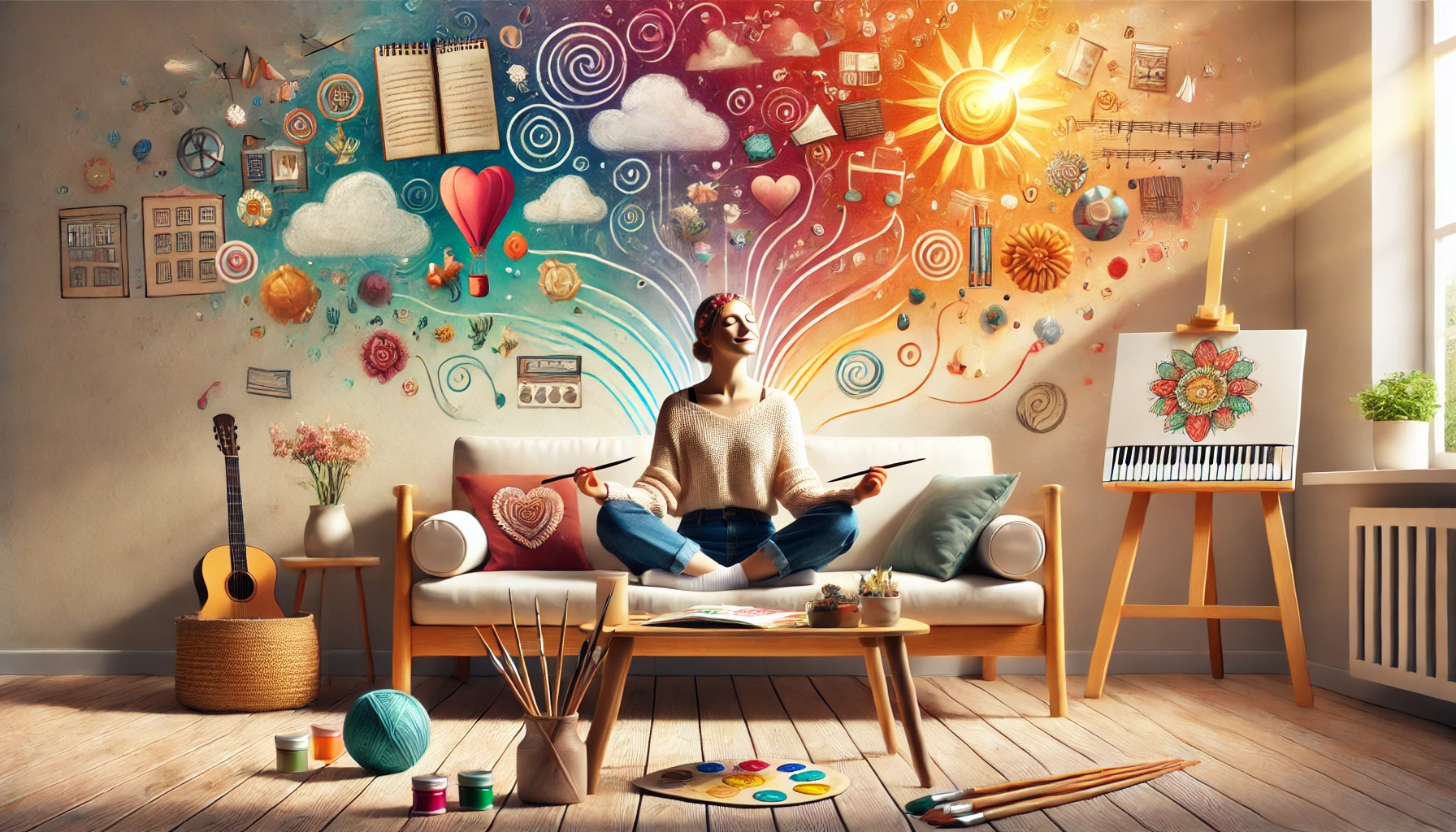Creativity is often associated with artists, musicians, and writers, but in reality, everyone has the ability to be creative. Whether it’s painting, writing, playing an instrument, or engaging in DIY projects, creative expression has profound effects on mental well-being, emotional resilience, and stress reduction.
Scientific research shows that engaging in creative activities improves brain function, reduces anxiety, and enhances overall happiness. But how does creativity influence mental health, and how can you incorporate it into your daily life?
In this article, we’ll explore the science behind creativity and emotional health, its psychological benefits, and practical ways to unlock creative potential.
1. The Science Behind Creativity and Mental Well-Being
Creativity is more than just a hobby—it’s a therapeutic tool that stimulates the brain, enhances self-expression, and promotes mental clarity.
1.1 How Creativity Affects the Brain
When you engage in creative activities, multiple areas of the brain become active:
- The prefrontal cortex (responsible for decision-making and problem-solving) strengthens.
- The hippocampus (linked to memory and emotion regulation) becomes more active.
- The dopaminergic system releases dopamine, the “feel-good” neurotransmitter, increasing motivation and positive emotions.
Creativity stimulates neural plasticity, allowing the brain to form new connections and improve cognitive function.
1.2 The Link Between Creativity and Stress Reduction
Studies show that creative activities lower cortisol levels (the stress hormone), helping the mind enter a relaxed state.
- Painting or drawing encourages mindfulness, similar to meditation.
- Writing or journaling helps process emotions and reduce mental clutter.
- Playing an instrument engages focus, reducing anxiety and stress.
2. The Psychological Benefits of Artistic Expression
2.1 Boosts Emotional Resilience
Creative expression provides a healthy outlet for emotions, allowing individuals to process feelings in a non-verbal and constructive way.
- People who engage in regular creative activities report higher emotional resilience.
- Creativity acts as a coping mechanism during stressful situations.
2.2 Improves Mood and Reduces Symptoms of Depression
Creative activities trigger the release of endorphins and serotonin, chemicals that enhance mood and combat depression.
- Studies show that individuals who engage in art therapy experience lower rates of depressive symptoms.
- Writing about emotions in a journal helps process trauma and release negative thoughts.
2.3 Enhances Self-Awareness and Personal Growth
Creativity encourages self-reflection and deepens understanding of one’s emotions.
- Art, music, and writing help individuals explore their thoughts and beliefs.
- Engaging in creative projects fosters a greater sense of identity and purpose.
2.4 Increases Mindfulness and Present-Moment Awareness
Many creative activities require full engagement and concentration, similar to meditation.
- When painting, playing music, or crafting, the mind enters a state of flow, reducing distractions and promoting relaxation.
- Focusing on creative tasks decreases overthinking and anxiety.
3. Different Forms of Creative Expression for Mental Health
3.1 Visual Arts (Drawing, Painting, and Sculpting)
Visual arts provide a non-verbal way to express emotions.
- Painting and drawing stimulate creative thinking and emotional release.
- Coloring books (even for adults) induce relaxation and reduce stress.
- Sculpting or pottery promotes tactile mindfulness.
3.2 Writing and Journaling
Writing is a powerful tool for processing thoughts and emotions.
- Gratitude journaling increases positive thinking.
- Expressive writing helps release emotional burdens.
- Poetry and storytelling allow deep self-expression.
3.3 Music and Sound Therapy
Music stimulates emotions and helps regulate mood.
- Playing an instrument improves cognitive function and stress management.
- Listening to music enhances relaxation and emotional balance.
- Singing or composing songs fosters self-expression.
3.4 Dance and Movement
Movement-based creativity connects the body and mind, releasing emotional tension.
- Dancing boosts endorphin levels, improving mood.
- Yoga and movement meditation promote relaxation.
- Expressive dance therapy allows emotional release through movement.
3.5 Crafts and DIY Projects
Engaging in hands-on activities provides a sense of accomplishment.
- Knitting, sewing, and woodwork improve focus and patience.
- DIY projects reduce stress and encourage problem-solving skills.
4. How to Unlock and Cultivate Creativity
4.1 Overcome the Fear of Imperfection
Many people hesitate to start creative activities because they fear not being good enough.
- Let go of perfectionism—creativity is about self-expression, not mastery.
- Focus on the process, not the outcome.
4.2 Schedule Time for Creativity
Treat creative time as an essential part of self-care.
- Set aside 10–30 minutes per day for a creative activity.
- Create a designated creative space to inspire ideas.
4.3 Try New Creative Outlets
Exploring different forms of creativity helps discover hidden talents.
- Experiment with different artistic styles, musical instruments, or writing prompts.
- Take creative workshops or online classes.
4.4 Practice Creative Mindfulness
Mindfulness enhances creativity by allowing thoughts to flow freely.
- Meditate before engaging in creative tasks.
- Engage in freewriting, doodling, or spontaneous music improvisation.
4.5 Collaborate and Share Your Creativity
Sharing creativity with others builds confidence and community.
- Join art clubs, music groups, or creative writing circles.
- Share creations on social media or personal blogs.
5. Overcoming Common Creativity Blocks
5.1 “I’m Not a Creative Person”
- Creativity is a skill that can be developed, not just an inborn talent.
- Start with small, low-pressure creative activities.
5.2 “I Don’t Have Time”
- Incorporate creativity into daily life—even 5 minutes counts.
- Replace screen time with creative activities.
5.3 “I’m Afraid of Judgment”
- Create for yourself, not for external validation.
- Embrace mistakes as part of the creative process.
6. The Long-Term Benefits of Creativity for Mental Health
- Increased emotional resilience and stress management.
- Greater self-confidence and self-awareness.
- Improved brain function and problem-solving skills.
- Stronger connections with others through shared creative experiences.
Final Thoughts
Creativity is a powerful and accessible tool for improving mental well-being. Whether through painting, writing, music, or dance, artistic expression helps reduce stress, boost mood, and enhance emotional resilience.
Start today—pick a creative activity that interests you and allow yourself the freedom to express, explore, and enjoy the process!

